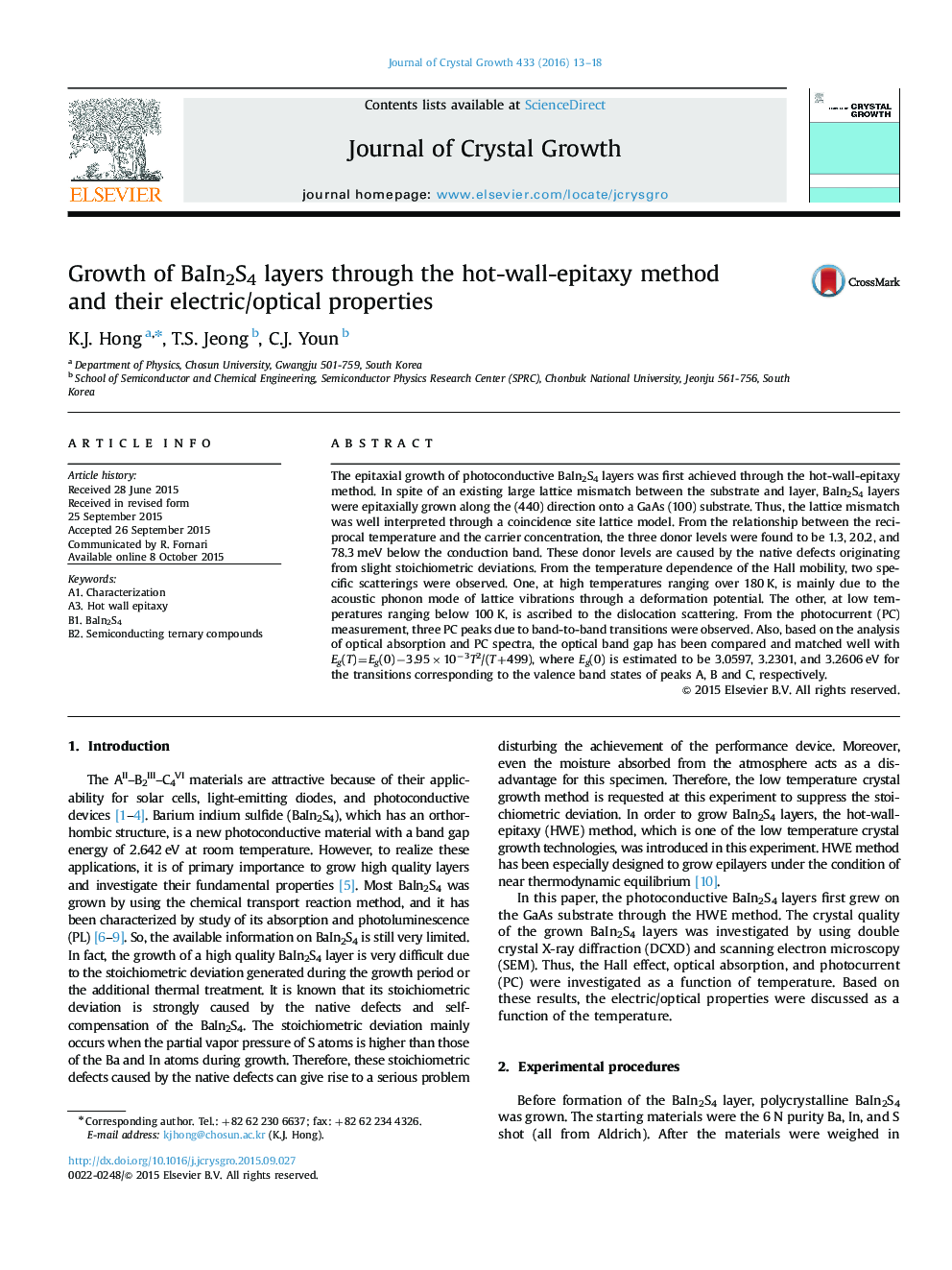| Article ID | Journal | Published Year | Pages | File Type |
|---|---|---|---|---|
| 1789799 | Journal of Crystal Growth | 2016 | 6 Pages |
Abstract
The epitaxial growth of photoconductive BaIn2S4 layers was first achieved through the hot-wall-epitaxy method. In spite of an existing large lattice mismatch between the substrate and layer, BaIn2S4 layers were epitaxially grown along the (440) direction onto a GaAs (100) substrate. Thus, the lattice mismatch was well interpreted through a coincidence site lattice model. From the relationship between the reciprocal temperature and the carrier concentration, the three donor levels were found to be 1.3, 20.2, and 78.3Â meV below the conduction band. These donor levels are caused by the native defects originating from slight stoichiometric deviations. From the temperature dependence of the Hall mobility, two specific scatterings were observed. One, at high temperatures ranging over 180Â K, is mainly due to the acoustic phonon mode of lattice vibrations through a deformation potential. The other, at low temperatures ranging below 100Â K, is ascribed to the dislocation scattering. From the photocurrent (PC) measurement, three PC peaks due to band-to-band transitions were observed. Also, based on the analysis of optical absorption and PC spectra, the optical band gap has been compared and matched well with Eg(T)=Eg(0)â3.95Ã10â3T2/(T+499), where Eg(0) is estimated to be 3.0597, 3.2301, and 3.2606Â eV for the transitions corresponding to the valence band states of peaks A, B and C, respectively.
Related Topics
Physical Sciences and Engineering
Physics and Astronomy
Condensed Matter Physics
Authors
K.J. Hong, T.S. Jeong, C.J. Youn,
